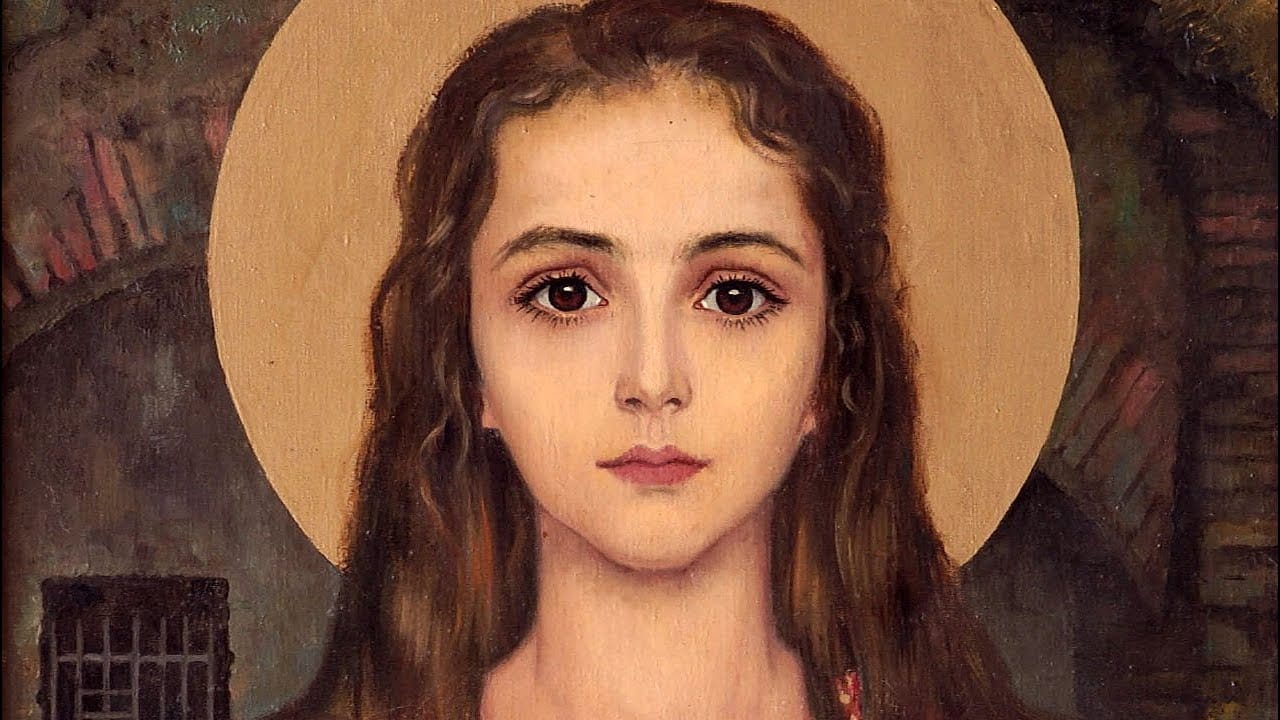Hey there! Are you ready for a mind-blowing journey into the life of Saint Philomena? Get ready to be amazed by her incredible story. As your guide, I’ll take you behind the scenes and reveal all the hidden gems about this early Christian superstar. We’ll uncover the secrets, the miracles, and the legacy that’s kept people talking for centuries. So, sit back, relax, and let’s dive into the captivating world of Saint Philomena.
Interesting Facts About St. Philomena
Have you heard of St. Philomena? She’s kind of a big deal in the Catholic world, even though the details of her life are a bit of a mystery. Some historians even suggest that she may not have existed at all! However, her story continues to resonate with people around the world. Let’s dive into some fascinating facts about this young saint:
- A Princess with Unwavering Faith: Imagine being a princess in ancient Greece, surrounded by luxury. That was St. Philomena’s life, according to legend! But she wasn’t interested in earthly riches. She believed in something much bigger: Christianity. Philomena dedicated her life to God, choosing faith over a life at court.
- A Vow of Purity: In those days, princesses were expected to marry powerful men, but Philomena had other plans. She pledged herself to God, vowing to remain celibate and devote her life to her beliefs. This decision took incredible courage, especially for someone so young.
- A Martyr’s Fate: Sadly, Philomena’s unwavering faith put her in danger. Because of her beliefs, she faced persecution and was ultimately martyred, probably at the age of 13. Can you imagine staying strong in the face of such adversity, especially as a teenager? This is what makes her story so compelling and why she’s remembered for her courage.
- The “Pearl of Florence”: Fast forward centuries to 1802. Workers unearthed Philomena’s remains in Rome. This discovery sent shockwaves through the religious world. A vial, believed to contain her blood, was found among the remains. People began attributing miracles to her intercession, and she quickly became known as the “Pearl of Florence” and the “Lily of the Arno.”
- A Saint for All Ages: Today, St. Philomena is revered as a powerful intercessor, particularly for the young and the sick. She’s seen as the patron saint of infants, babies, young people, and those struggling with illness. Many believe her story offers hope and reminds us that even in the darkest of times, faith can give us strength.
There’s still much we don’t know about St. Philomena, but her story continues to resonate with people around the world. Her unwavering faith, courage, and sacrifice serve as an inspiration, reminding us that even a seemingly ordinary life can have an extraordinary impact.
What is a fun fact about St. Philomena?
So, we’ve been talking about St. Philomena, this really interesting saint with a bit of a mysterious past. There’s so much we don’t know for sure about her life, which makes her story even more captivating. One pretty amazing thing happened back in 1802 that really put St. Philomena on the map, so to speak. Deep within the Catacombs of Priscilla in Rome, her remains were discovered. The area where she was laid to rest was sealed with terracotta tiles, which suggests that even way back then, she was considered a pretty significant figure. Some folks believe this unique discovery provides a tangible connection to this early Christian martyr, offering a glimpse into the distant past.
What are the colors of St. Philomena?
We often picture saints with certain colors, right? It’s like a visual language that helps us understand their story. For Saint Philomena, it’s no different! These colors aren’t just random; they’re deeply connected to how people view her life and what she represents.
- White: Think about a pure white light. That’s the image many connect with innocence and purity, and it’s often linked to Saint Philomena.
- Red: This color instantly makes us think of passion and sacrifice, but in the case of many saints, it specifically represents martyrdom, a testament to their unwavering faith. It’s a powerful reminder of the sacrifices made for beliefs.
- Green: When you see green, you think of growth and hope, right? For Saint Philomena, it signifies the hope she offers to those who pray to her.
- Blue: This color often symbolizes trust and faith, making it a fitting representation of Saint Philomena’s unwavering faith.
- Yellow: This bright and radiant color is often associated with glory and light. In religious art, it frequently depicts a divine presence, making it fitting for someone revered as a saint.
Now, it’s important to remember that while these are common interpretations, there isn’t always a definitive guidebook to the symbolism of colors in religious art! These interpretations can evolve over time and across different cultures. That’s part of what makes exploring these topics so fascinating!
So, the next time you see an image of Saint Philomena, take a moment to appreciate the colors and the deeper meanings they might hold.
What miracles did Saint Philomena perform?
Saint Philomena is known as the “Wonder-Worker,” and people believe it’s because of all the amazing miracles linked to her. We’re talking incredible stuff, like people being healed from serious illnesses just by asking for her help.
One of the most fascinating stories is about her bone dust. When it was shared with people, it supposedly started multiplying! Like, way more than there should have been. Now, some people think this is a sign of her power, showing that she’s looking out for everyone, even after all this time.
Then there’s this wild story about a cracked marble altar in a church. Legend has it that when they touched it with Saint Philomena’s relics, the altar was miraculously fixed! Can you imagine? No wonder people started calling her a miracle worker after that.
But the healings? Those are probably the most well-known stories. People say she’s helped folks struggling with all sorts of illnesses, stuff that doctors couldn’t even figure out. It’s like she has this special gift for healing, bringing hope to people when they need it most.
And it’s not just about physical healing either. Lots of people believe that Saint Philomena is there for them when things get tough, like if they’re feeling lost or scared. They pray to her for protection from danger or for comfort when they’re grieving. It’s like she’s become this symbol of strength and resilience for people going through tough times.
Now, it’s important to remember that not everyone believes in miracles, and that’s okay. But for those who do, Saint Philomena represents something truly special—a beacon of hope and a reminder that sometimes, incredible things can happen.
What are St. Philomena’s Symbols?
We’ve already talked about Saint Philomena’s fascinating life, but what about the things that represent her? Let’s dive into the meaning behind the symbols often linked to her.
Think about it like this: imagine you find an old treasure chest. Inside are objects that give you clues about the person who owned it. That’s kind of what happened when Saint Philomena’s tomb was discovered back in 1802. It was decorated with images that seem to tell us a lot about her life, her challenges, and her beliefs.
For example, right there on her tomb, we find two anchors. Now, anchors are all about holding strong, right? They keep ships steady in storms. So, it makes sense that these anchors probably represent the strength of Saint Philomena’s faith, especially when she faced danger and hardship.
Then there are the three arrows. It’s widely believed that these arrows symbolize the pain and suffering that she went through. They remind us of the sacrifices she made for her faith.
But it’s not all about hardship. The tomb also features a palm branch, a symbol that’s often linked to victory and overcoming obstacles. This might represent Saint Philomena’s triumph over adversity, her spiritual victory even in the face of challenges.
And there’s more! A flower, possibly a lily, is often shown near her image. Lilies are frequently associated with purity and innocence, suggesting that these qualities played a significant role in her life.
If we look beyond her tomb, we find even more symbols connected to Saint Philomena:
- Lily: As we mentioned, the lily often represents purity and innocence. It might be a nod to the traditional belief that Saint Philomena valued these virtues highly.
- Anchor: Again, the anchor pops up, probably reminding us of that strong, unwavering faith that she is known for.
- Crown: This one likely represents her status as a martyr, someone who died for their beliefs. The crown could also symbolize the reward she is believed to have received in heaven.
These symbols do more than just decorate; they provide a way for us to connect with Saint Philomena’s story. Each symbol is like a piece of a puzzle, helping us to understand who she was and what she stood for. They encourage us to think about faith, courage, and the idea that even in the face of difficulty, hope and inner strength can prevail.
What Saint Protects Babies?
We’ve talked about some amazing saints, but who do you turn to for the really little ones? You know, the babies, the toddlers, the kids just finding their way? Well, there’s one saint who seems to have a special connection with young souls: Saint Philomena.
Now, Philomena’s story is a bit of a mystery. We know she was probably a young Christian girl living way back in the 4th century. Sadly, she lived during a time when Christians were often persecuted, and her strong faith eventually led to her death. That’s what makes her a martyr – someone who dies for their beliefs.
Even though we don’t know all the details of her life, the symbols found with her remains tell us a lot about her spirit. When her tomb was discovered in the 1800s, it was decorated with images like:
- Two anchors: Anchors keep ships steady in stormy seas, right? For Christians, they often symbolize hope and steadfastness, suggesting Philomena stayed strong in her faith even when times were tough.
- Three arrows: These likely represent the pain and suffering she endured. It’s a reminder that even in hardship, faith can offer comfort.
- A palm branch: The palm branch is often linked to victory and triumph. It suggests that in the end, Philomena’s faith brought her peace and a different kind of victory.
- A flower: Flowers often symbolize innocence and purity, which fits with what we know about Philomena’s young age and dedication to her faith.
Speaking of her tomb, its discovery in the Roman catacombs back in 1802 caused quite a stir! People were amazed by the well-preserved state of her remains and the inscription that identified her: “Philomena virgo martyr” – Philomena, virgin martyr.
But here’s where it gets even more interesting: almost as soon as her story was known, people started reporting miracles and answered prayers. They called her “The Wonder-Worker” because she seemed to help with all sorts of problems, especially those involving children. It’s almost like her spirit was just waiting to be rediscovered so she could continue her work of protecting the young and innocent.
So, if you’re ever feeling worried about a child in your life, say a little prayer to Saint Philomena. You never know, she might just be listening.
Who Saint Philomena is there to help:
- Babies and Infants
- Young children
- Teenagers and Youth
- People who are sick or suffering
- Those who are imprisoned
Remember, while we may not have all the answers about her life, Saint Philomena’s story reminds us that faith and courage can leave a lasting impact, even centuries later.
Why is Saint Philomena not a saint?
You’re right to be curious! It’s a bit of a head-scratcher. See, while many people hold Saint Philomena dear and believe in her ability to intercede on their behalf, there’s a bit of a question mark hanging over her official sainthood.
Here’s the thing: back in the 1800s, a young girl’s remains were discovered in Rome. These remains, accompanied by symbols like anchors and arrows, were linked to the early Christian era. Naturally, folks were excited! It felt like finding a piece of history. Based on these symbols and some early writings, people began to piece together a story about a young girl named Philomena, a devoted follower of Christ who faced persecution.
For a while, things moved along swimmingly. Pope Pius IX even officially recognized Philomena as a saint in 1837. But then… historians started digging deeper. And the more they dug, the more they realized that the early writings about Philomena were a bit like whispers in the wind–hard to pin down and lacking solid evidence.
Adding to the uncertainty, the symbols found with the remains, while intriguing, don’t actually definitively prove anything. They could be connected to early Christians, sure, but they also could mean something else entirely. It’s like trying to solve a puzzle with only half the pieces!
So, where does that leave Saint Philomena? In a kind of limbo, really. The Church hasn’t officially revoked her sainthood, so technically, she’s still considered a saint. But, there’s definitely a big ol’ asterisk next to her name in the history books. Some folks continue to pray to her and find comfort in her story, while others feel it’s important to acknowledge the historical inconsistencies.
It’s kind of like an unsolved mystery, and who knows, maybe someday new evidence will come to light that definitively proves or disproves the stories about her life. Until then, it’s up to each individual to decide what they believe.
Interested in learning about other fascinating figures? Check out these links:
- Uncover intriguing facts and little-known details about the life and legacy of the renowned composer Joseph Haydn at interesting facts about Joseph Haydn.
- Seeking to delve into the life of Padre Pio, a revered saint known for his miracles and devotion? Explore interesting facts about Padre Pio to discover his extraordinary journey.
- Unlock Elemental 2 Secrets: Actionable Insights Now - April 2, 2025
- Lot’s Wife’s Name: Unveiling the Mystery of Sodom’s Fall - April 2, 2025
- Photocell Sensors: A Complete Guide for Selection and Implementation - April 2, 2025
















